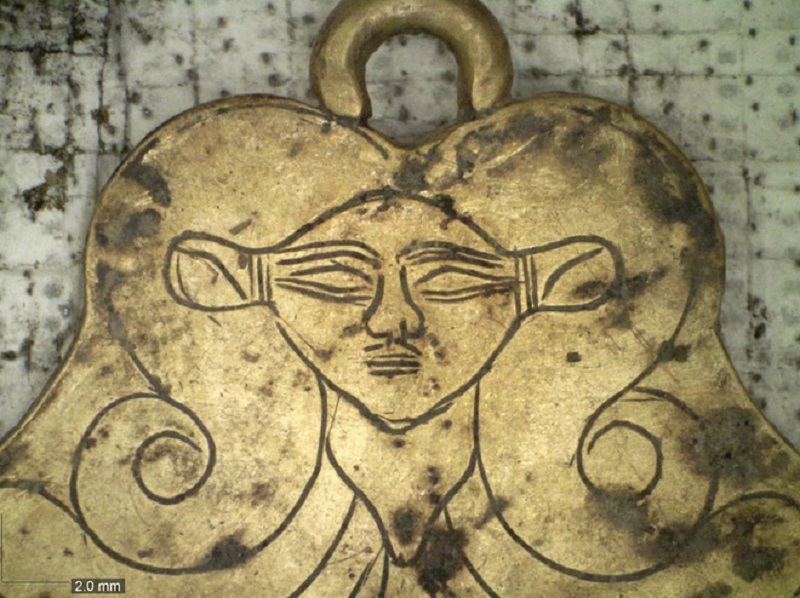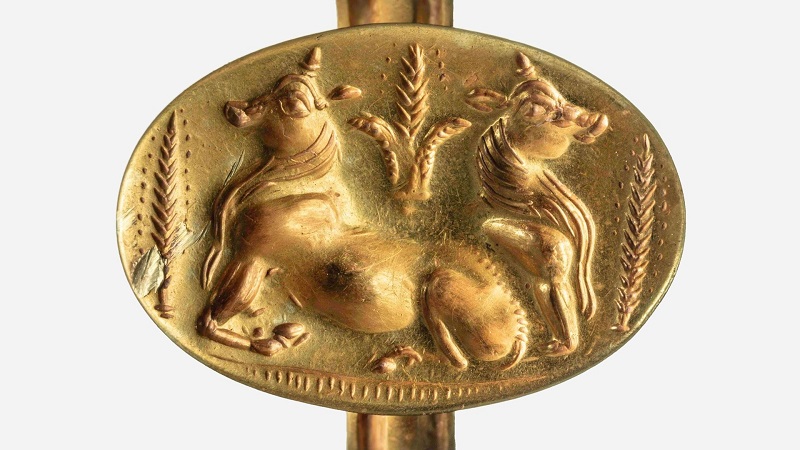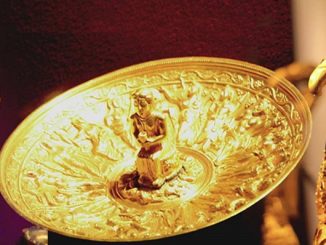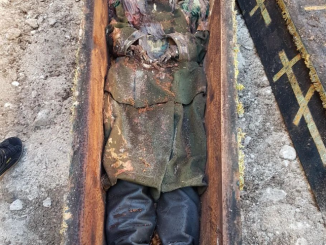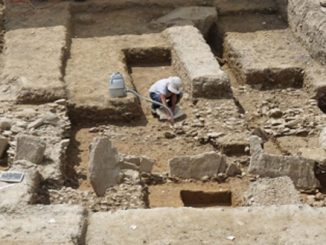Archaeologists from the University of Cincinnati recently announced the discovery and excavation of two ancient Bronze Age tombs, dating back to 3,500 years ago, located near the ancient city of Pylos in the South. Greek.
A gold pendant shaped like the Egyptian goddess Hathor was found in one of two 3,500-year-old tombs (photo: Newsweek)
“It’s been 50 years since any major grave of this type has been found. That makes it extraordinary.” Jack Davis, an archaeologist on the excavation team, said.
Archaeologists Jack Davis and Sharon Stocker announced the discovery of two ancient tombs in the coastal town of Pylos, Greece on Tuesday, December 17. The location of the tomb is near the palace of Emperor Nestor – the legendary king described in two famous epics The Iliad and Odyssey by poet Homer.
The two tombs were built in dome-shaped structures called tholos. This type of mausoleum is usually reserved for royalty. One grave is about 12 m in diameter and the other is about 8.5 m in diameter.
Tens of thousands of large, densely packed rocks the size of watermelons have protected the two tombs from thieves and vandals for millennia, leaving them virtually as intact as when new. built.
Inside the tomb, Davis and Stocker found amber from the Baltic Sea and amethyst from Egypt and many pieces of gold that were used to line the walls and floor of the tomb.
Archaeologists also discovered a gold ring, engraved with two bulls and motifs believed to be barley flowers. These are two typical artistic symbols of the civilization of Crete under the Minoan dynasty (Greece).
In addition, there is a gold pendant, engraved with the image of the ancient Egyptian goddess Hathor, the Egyptian goddess who symbolizes love, beauty and joy.
“This special pendant shows that the goddess Hathor also has the role of protector of the souls of the dead,” Mr. Davis said.
An extremely valuable gold ring was found in two graves (photo: Newsweek)
The tombs also contain many works of art depicting mythical creatures. A seal made of agate, engraved with two lion-headed creatures with sharp clawed feet. Two other antiques are made of bronze and gold, both of which are engraved with a 16-pointed star.
The two tombs also contain exquisitely carved ivory plaques, along with armor and weapons. The above findings cause these two tombs to be compared with the famous ancient tomb of the Griffin warrior, discovered in 2015, in Greece.
According to Ms. Sharon Stocker, the Mycenaeans built these tombs before the ancient Greeks ruled much of the eastern Mediterranean, from 1600 to 1100 BC.
Thus, the owner of this tomb lived during the first years of Greek civilization, when goods and luxury items were not yet popular, and was a very prestigious person.
“If at that time you owned this huge amount of wealth, people would definitely compete for it. The person who built these two tombs at that time was really smart,” Ms. Stocker said.
“The presence of these two tombs shows that the remote town of Pylos was once an important Greek trading center during the Bronze Age,” Ms. Stocker added.
